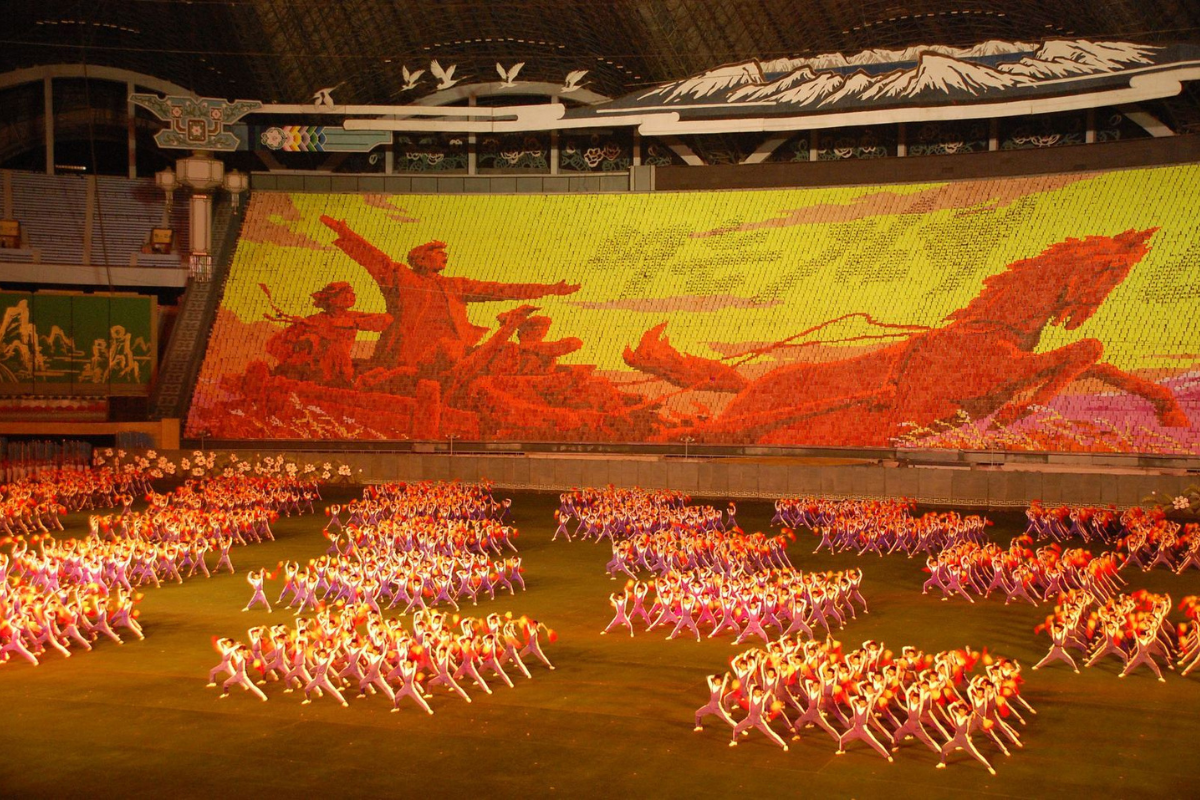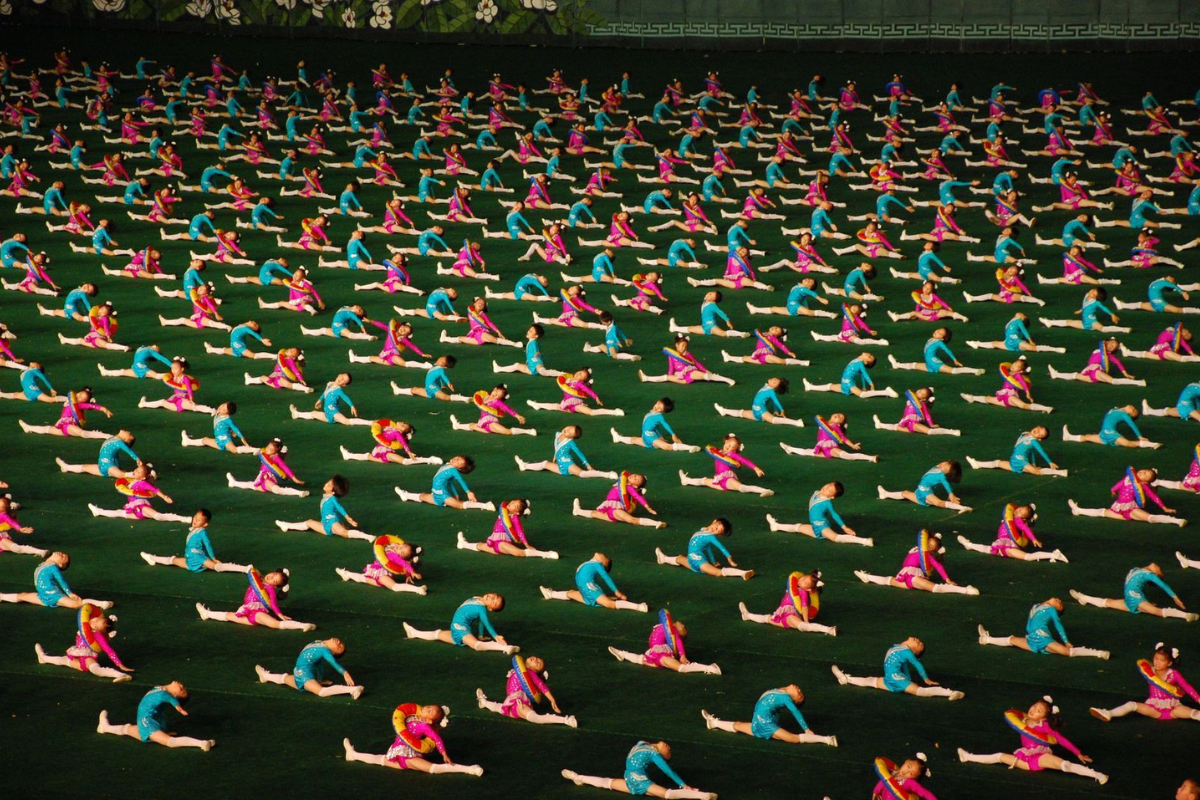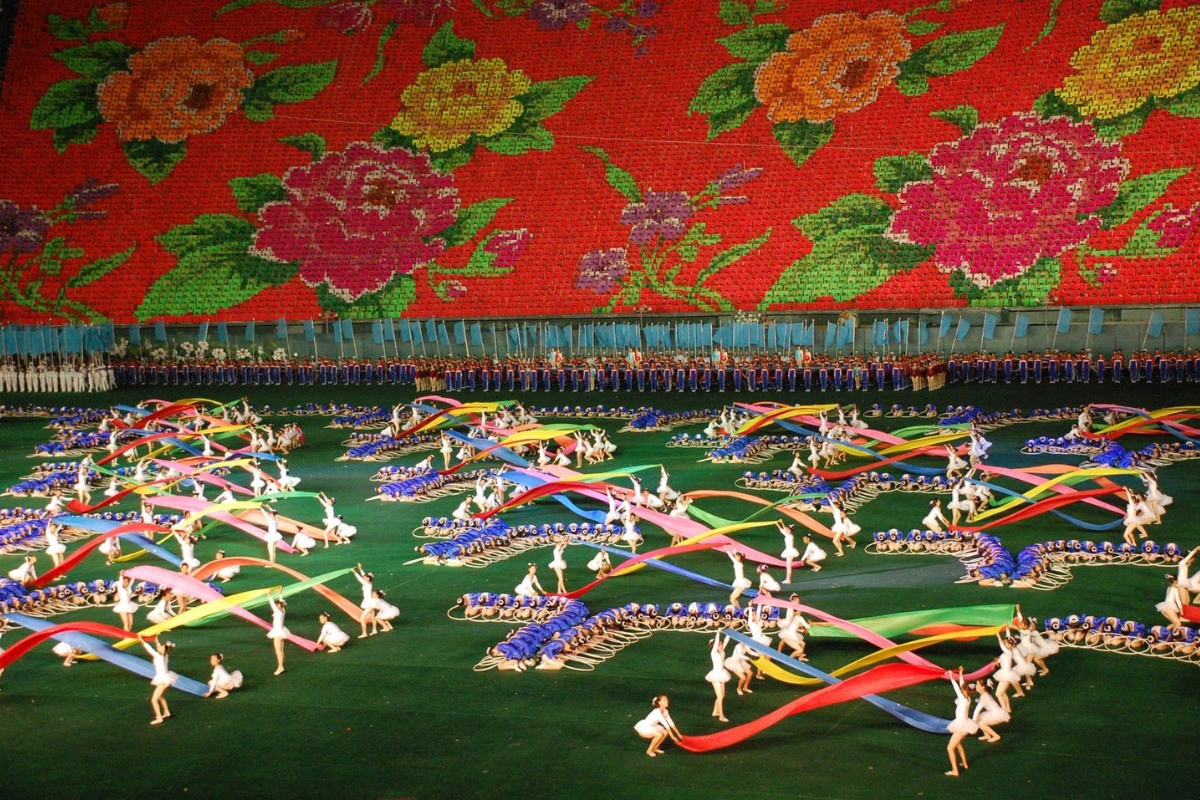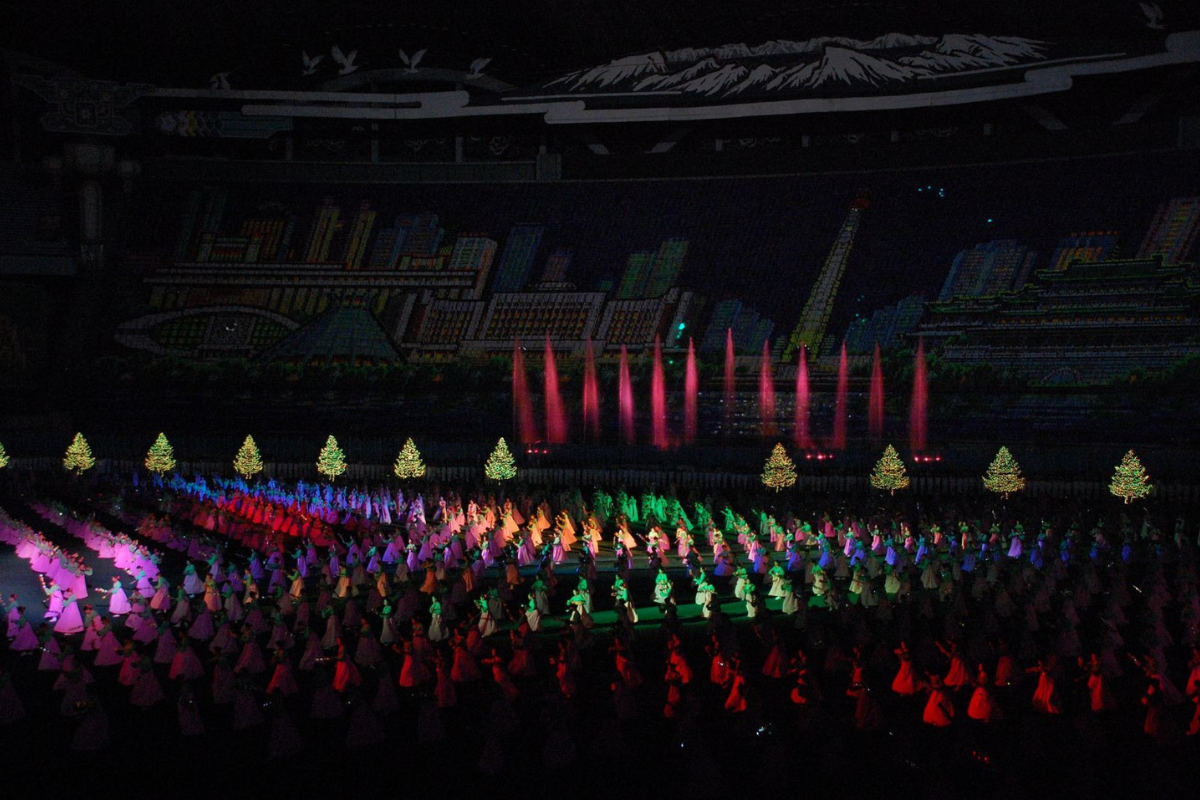The Arirang Mass Games, also known as the Grand Mass Gymnastics and Artistic Performance Arirang, is a colossal spectacle unlike any other. Held in the Rungrado May Day Stadium, the largest stadium in the world, these games showcase a mesmerizing display of synchronized gymnastics, dance, acrobatics, and theatrics performed by tens of thousands of North Koreans.

Photo: Magx
The origins of the Arirang Mass Games can be traced back to mass gymnastic displays held during the early years of North Korea. However, the Arirang as we know it today emerged in 2002, drawing inspiration from a traditional Korean folk song called Arirang. These poignant songs often depict themes of love, loss, and longing for reunification.
The games typically take place over a period of several weeks in August or September. They involve a massive cast of performers, with estimates ranging from 100,000 to 200,000 participants. This includes gymnasts, dancers, school children holding colored cards that create giant mosaics, and even audiences strategically placed to form specific patterns.
A propaganda masterpiece: A glimpse into a closed society
The Arirang Mass Games are a powerful tool for North Korean propaganda. The performances are meticulously choreographed and staged, presenting a highly choreographed and nationalistic narrative. Themes of national pride, unity, and unwavering loyalty to the Kim dynasty are woven throughout the program.
The Arirang Mass Games are a testament to North Korea’s ability to organize and mobilize its population. The sheer scale of the performances is awe-inspiring. Imagine a moving tapestry of human bodies forming intricate patterns and tableaux that shift and change with breathtaking precision. The synchronized movements are complemented by colorful costumes, dramatic lighting, and a powerful soundtrack that heightens the emotional impact.
One particularly striking element is the use of “human flipbooks.” Schoolchildren hold up brightly colored cards that, when flipped in unison, create large, dynamic images. This technique allows for the creation of vast, ever-evolving murals depicting historical scenes, political messages, and even portraits of the Kim family.

Photo: Magx
The human cost of the Arirang Mass Games is a topic of much debate. Participants, often young schoolchildren and university students, reportedly dedicate months to grueling rehearsals. Questions have been raised about the pressure placed on performers and the potential for injuries.
Despite the controversy, the Arirang Mass Games offer a unique window into North Korean society. The performances showcase the importance placed on discipline, social cohesion, and national identity. They also provide a glimpse into the country’s artistic vision and its efforts to promote its ideology. The Arirang Mass Games have undergone some changes in recent years. The frequency of the performances has decreased, and there has been a shift towards themes of peace and economic development alongside the traditional focus on national pride. Whether these changes represent a genuine evolution or a strategic adaptation remains to be seen.
The symphony of movement: Music and choreography in the Arirang Mass Games
The Arirang Mass Games are not simply a visual spectacle; they are a carefully orchestrated symphony of movement and music. Music plays a vital role in setting the mood, conveying emotions, and synchronizing the actions of the thousands of performers. The soundtrack is a powerful blend of traditional Korean instruments, revolutionary anthems, and modern orchestral pieces.
Traditional Korean instruments like the piri, a double-reed oboe, and the janggu, an hourglass-shaped drum add a touch of cultural heritage and evoke a sense of national identity. These instruments often weave in melodies from the folk song Arirang, further connecting the performances to the song’s themes of resilience and longing.
Revolutionary anthems serve to energize the crowds and reinforce the ideology of the state. Stirring lyrics and triumphant melodies celebrate the achievements of the Kim regime and inspire feelings of patriotism and devotion. Modern orchestral pieces, often commissioned specifically for the games, add a layer of grandeur and sophistication. The sweeping scores evoke a sense of awe and power, further emphasizing the strength and unity of the nation.

Photo: Magx
Choreography is the other critical element that brings the music to life. The synchronized movements of the mass performers create a mesmerizing visual tapestry. Simple formations like waves and lines represent unity and conformity. More complex patterns, such as geometric shapes and historical tableaux, depict specific narratives and messages.
The choreography is meticulously designed to seamlessly blend with the music. Changes in tempo and mood are reflected in the movements of the performers. Dramatic crescendos might be accompanied by a flurry of activity, while softer passages could see the performers holding poses or creating flowing patterns.
The combination of music and choreography in the Arirang Mass Games is a powerful tool for conveying emotions and messages. Through a carefully crafted soundscape and precisely coordinated movements, the games create an immersive experience that promotes national pride, reinforces ideology, and leaves a lasting impression on both participants and audiences.
Duality of spectacle: The Arirang Mass Games and North Korean society
The Arirang Mass Games leave an undeniable mark on North Korean society. From a young age, citizens are instilled with the importance of participation and national pride. The months of rigorous training leading up to the games foster a sense of discipline, cooperation, and collective identity. Witnessing the spectacle itself reinforces these values, showcasing the power of unity and the strength of the nation.
However, the impact is not without its complexities. The pressure to perform flawlessly and the sheer amount of time dedicated to rehearsals can be significant burdens. There are concerns that the games prioritize national image over individual well-being, particularly for the young participants.

Photo: Magx
Despite these potential downsides, the Arirang Mass Games remain a significant cultural event in North Korea. They provide a shared experience that reinforces the government’s narrative and fosters a sense of national unity.
The Arirang Mass Games are a major draw for a small but steady stream of tourists to North Korea. The spectacle offers a unique opportunity to witness North Korean culture and ideology firsthand. For some tourists, the sheer scale and technical precision of the performances are a source of fascination.
However, the controlled nature of tourism in North Korea limits the ability to experience the true impact of the games on society. Tourists are carefully monitored and have limited interaction with ordinary citizens. The Arirang Mass Games, therefore, become a staged spectacle rather than a window into everyday life.
The future of tourism in North Korea, and by extension, the role of the Arirang Mass Games in attracting visitors, remains uncertain. Political tensions and concerns about human rights continue to limit travel to the country. However, if North Korea opens up more to tourism in the future, the Arirang Mass Games could become a more significant draw for those seeking a glimpse into this isolated nation.

